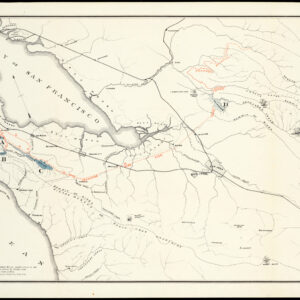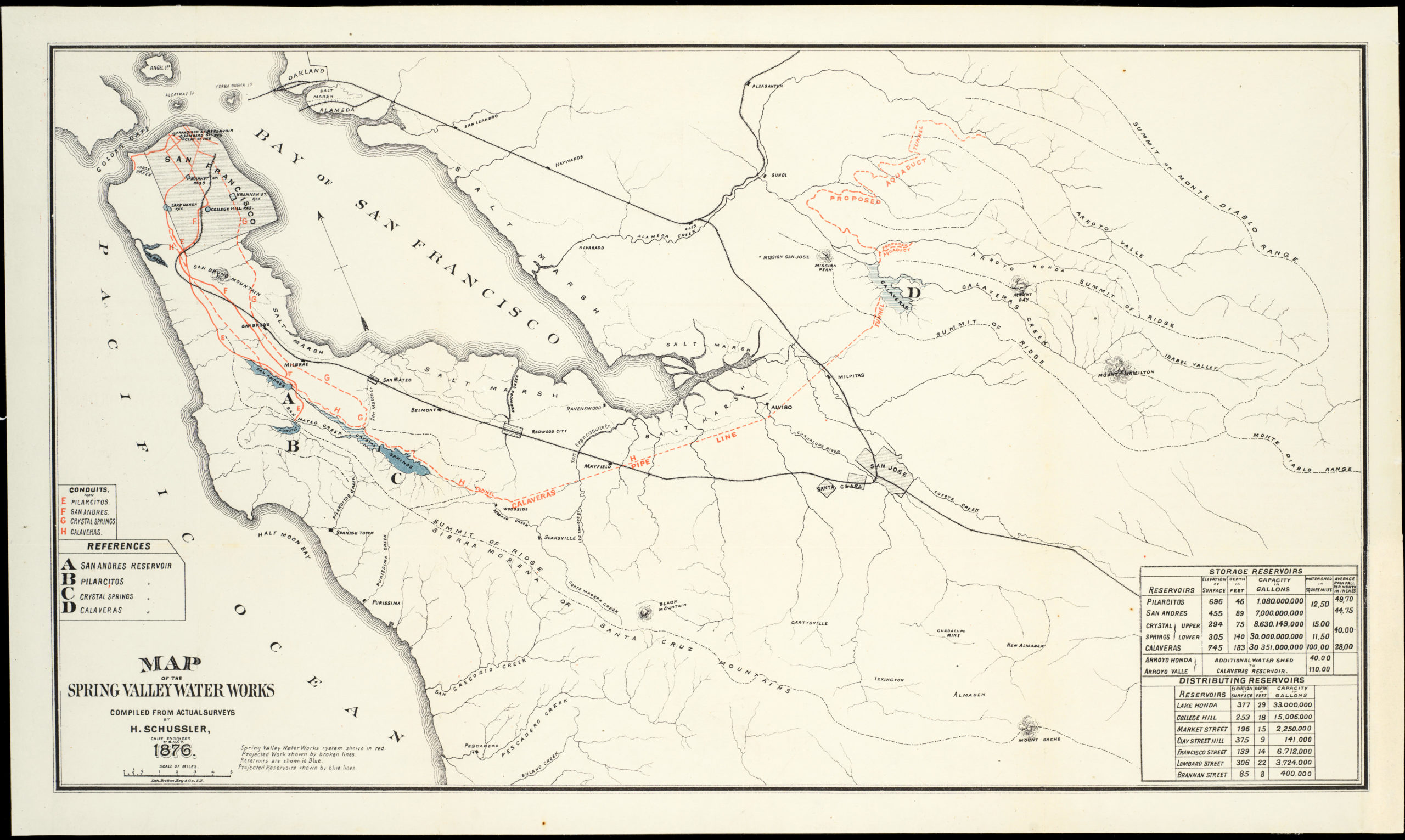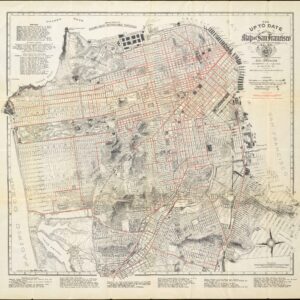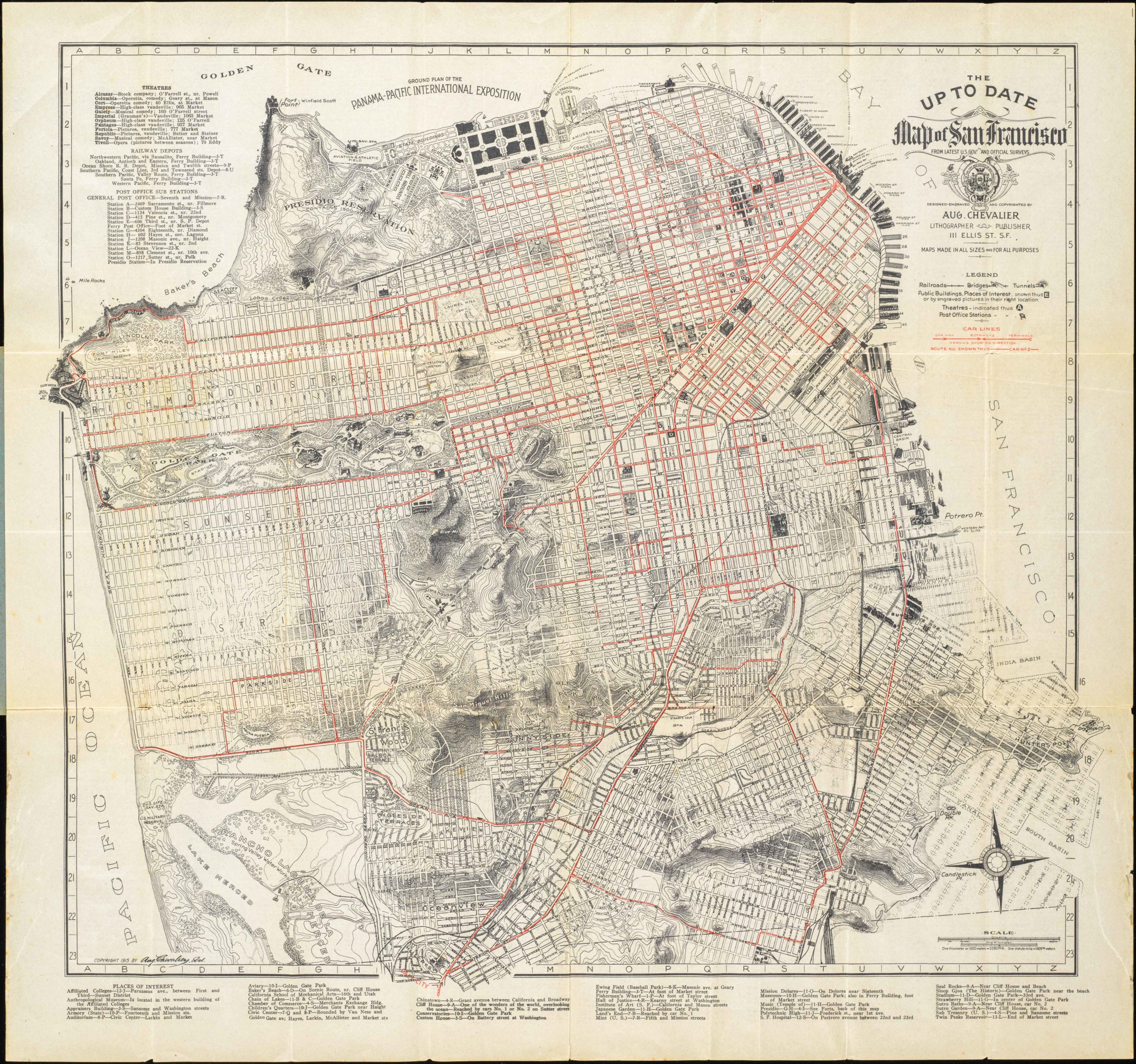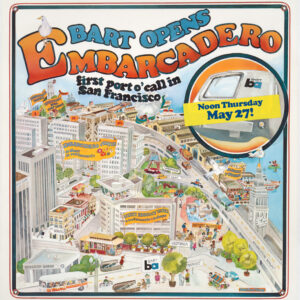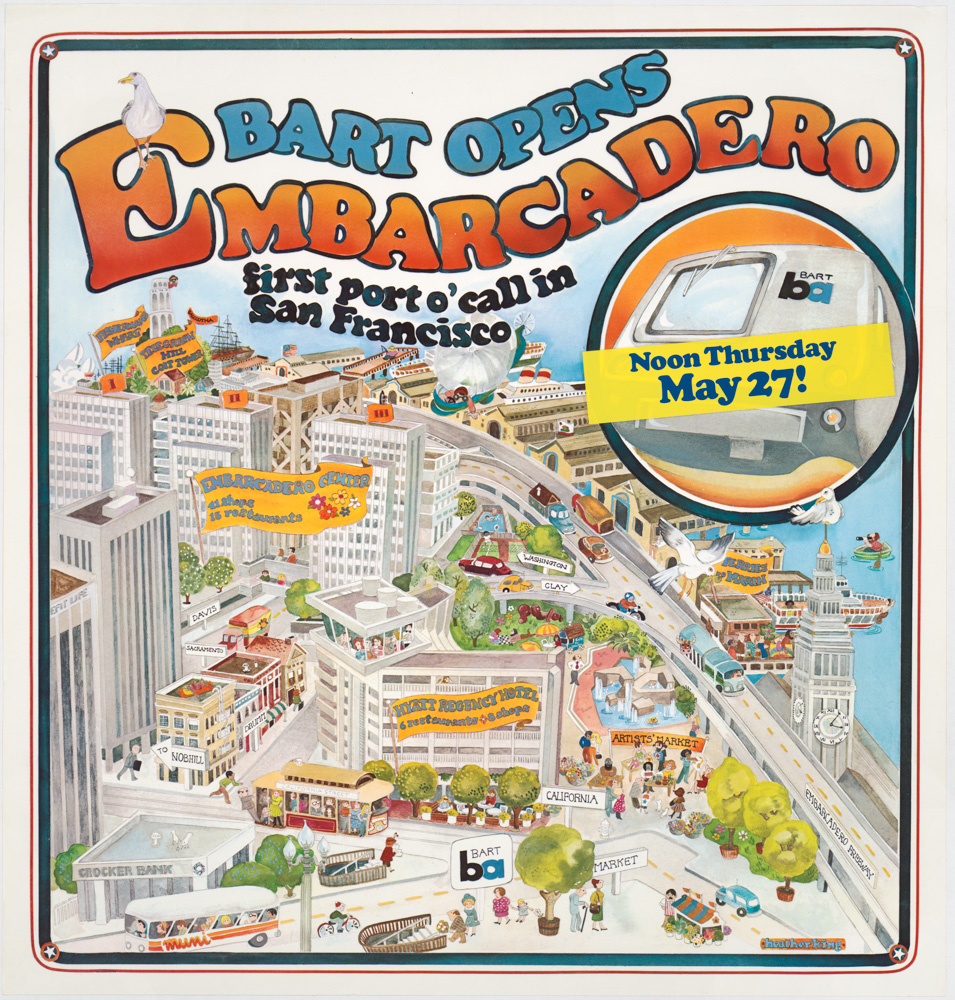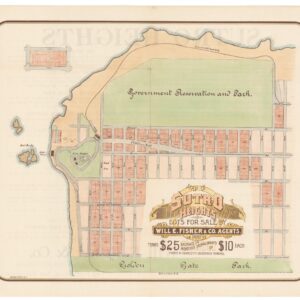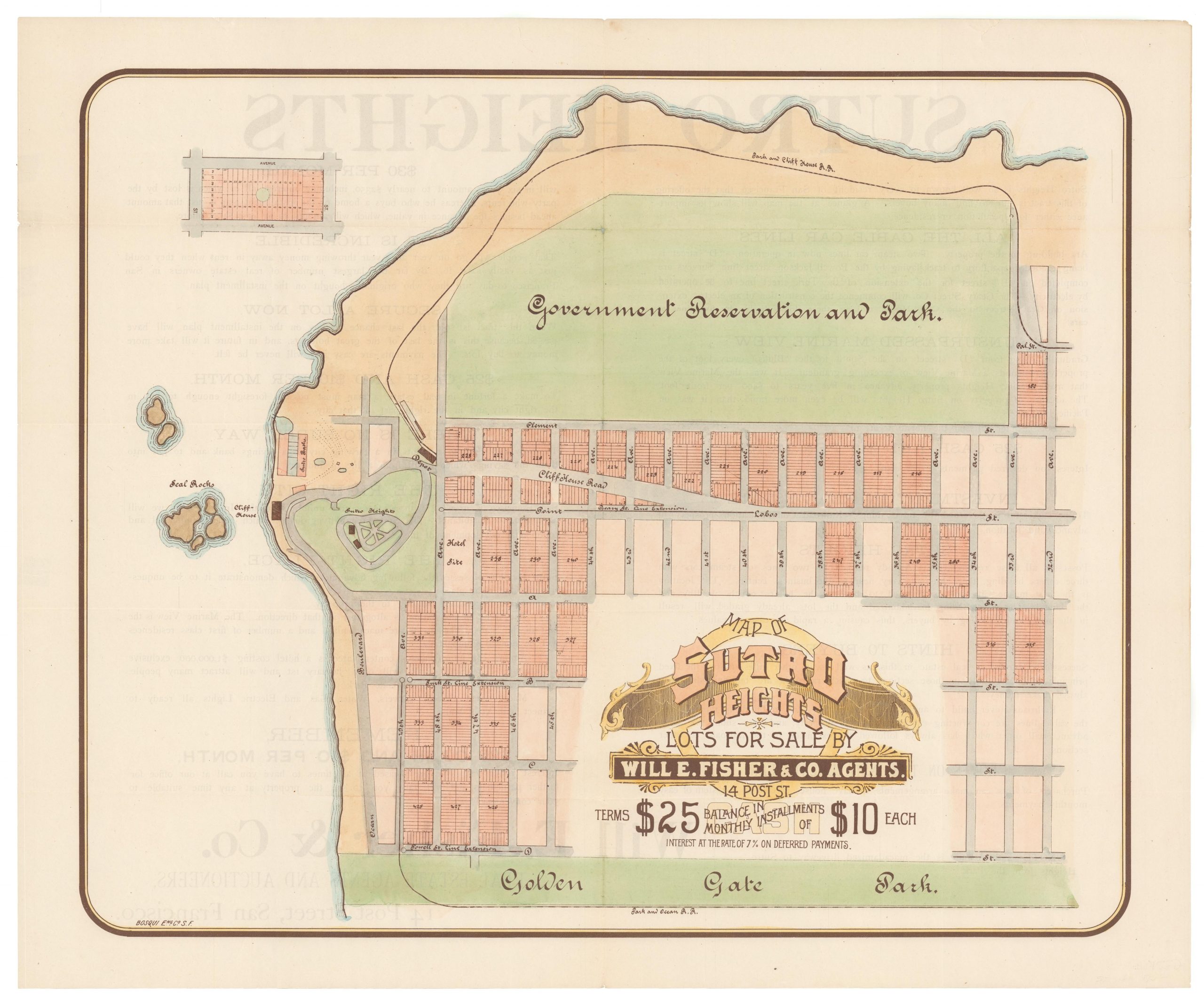Spectacular Gold Rush era view of San Francisco published in Paris.
San Francisco. From California Street. Drawn from a Daguerreotype, the property of Eugene Delessert, Esq.re
$8,000
1 in stock
Description
This is a sweeping view of San Francisco published in Paris around the year 1855. It was constructed from a daguerrotype (or a series of daguerrotypes) taken from land on today’s Nob Hill owned by a local merchant, Eugène Delessert. The view looks down Sacramento Street towards today’s financial district. At the end of the street in San Francisco Bay we see the famed “forest of masts” – the harbor so full of ships arriving for the Gold Rush that the it became dense with rising masts. The foreground on Nob Hill follows the theme of the Gold Rush and an evolving city, with a series of figures, including miners and Chinese laborers.
Documenting a momentous time for both the city in particular and the United States in general — what Barbara Berglund calls “the emergence of a new urban society on the western frontier of the country’s landed empire” — this panoramic view looks east over the city, with Yerba Buena Island at center and the Oakland/Berkeley Hills in the background. From left to right, the other distinguishing natural features are Alcatraz and Angel Islands, Telegraph Hill, and Rincon Point to the south.
In the years prior to the publication of this view, San Francisco was a true boom-town, having grown from a sleepy village into a sizable city in about one year. In the summer and fall of 1848, after the discovery of gold in the Sierra Nevada foothills, the town of about 1,000 was nearly depopulated as its residents literally ran for the hills in search of gold. Two years later, after the 1849 Gold Rush brought gold seekers from all over the world, it had grown to a city of over 25,000—the largest on the Pacific coast of the Americas.
The city is recorded in exquisite detail to the individual building level, accurately illustrating its churches, schools, banks, government buildings, and more. The engraving work is so fine that we even see each individual footpath leading up Telegraph Hill, atop which sits a windmill-like structure known as a semaphore. This was erected in September 1849 for the purpose of signaling to the rest of the city the nature of the ships entering the Golden Gate. It consisted of a pole with two raisable arms that could form various configurations, each corresponding to a specific meaning: steamer, clipper, sailing boat, etc. The information was gathered by observers operating for financiers, merchants, wholesalers, and speculators in the city.
We have identified many buildings in the image below, including the contemporary city hall. There have been six city halls in the history of San Francisco, and unusually high number for a relatively young city: the result of repeated devastating fires in the first decades following the Gold Rush, and of course the 1906 earthquake. The city hall visible on this view is #3, often referred to as “Old City Hall.” It was built on the lot on which previously sat the Jenny Lind Theatre (the Parker House), and lasted from 1853-1878.
Cartographer(s):
Joseph Lemercier (1803-1887) was the director of the acclaimed Paris lithography firm of Lemercier & Cie.
Condition Description
An absolutely beautiful image with some minor wear along the margins.
References
https://calisphere.org/item/ark:/13030/kt6g50050c/
Berglund, Barbara. Making San Francisco American: Cultural Frontiers in the Urban West, 1846-1906. Lawrence: University Pr Of Kansas, 2010, p. 1.
Many thanks to Nick Wright for his help on the annotations.
